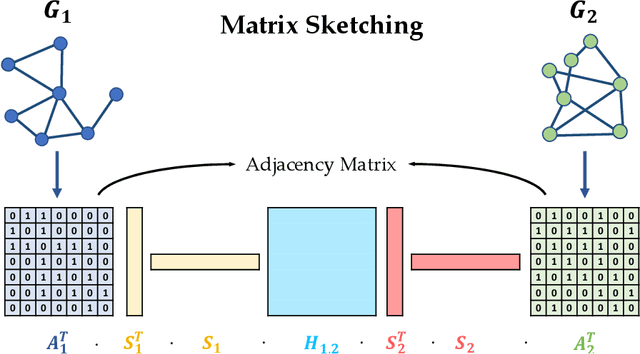Fast Graph Neural Tangent Kernel via Kronecker Sketching
Paper and Code
Dec 04, 2021



Many deep learning tasks have to deal with graphs (e.g., protein structures, social networks, source code abstract syntax trees). Due to the importance of these tasks, people turned to Graph Neural Networks (GNNs) as the de facto method for learning on graphs. GNNs have become widely applied due to their convincing performance. Unfortunately, one major barrier to using GNNs is that GNNs require substantial time and resources to train. Recently, a new method for learning on graph data is Graph Neural Tangent Kernel (GNTK) [Du, Hou, Salakhutdinov, Poczos, Wang and Xu 19]. GNTK is an application of Neural Tangent Kernel (NTK) [Jacot, Gabriel and Hongler 18] (a kernel method) on graph data, and solving NTK regression is equivalent to using gradient descent to train an infinite-wide neural network. The key benefit of using GNTK is that, similar to any kernel method, GNTK's parameters can be solved directly in a single step. This can avoid time-consuming gradient descent. Meanwhile, sketching has become increasingly used in speeding up various optimization problems, including solving kernel regression. Given a kernel matrix of $n$ graphs, using sketching in solving kernel regression can reduce the running time to $o(n^3)$. But unfortunately such methods usually require extensive knowledge about the kernel matrix beforehand, while in the case of GNTK we find that the construction of the kernel matrix is already $O(n^2N^4)$, assuming each graph has $N$ nodes. The kernel matrix construction time can be a major performance bottleneck when the size of graphs $N$ increases. A natural question to ask is thus whether we can speed up the kernel matrix construction to improve GNTK regression's end-to-end running time. This paper provides the first algorithm to construct the kernel matrix in $o(n^2N^3)$ running time.
 Add to Chrome
Add to Chrome Add to Firefox
Add to Firefox Add to Edge
Add to Edge